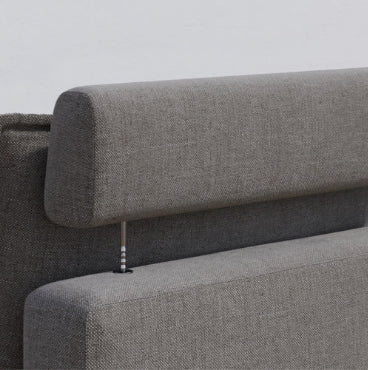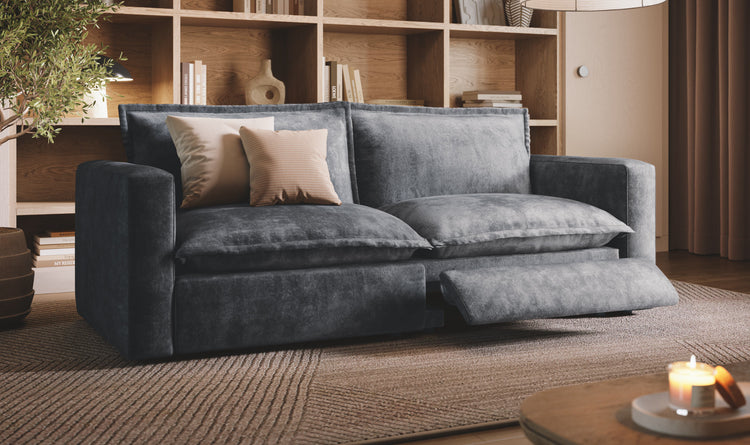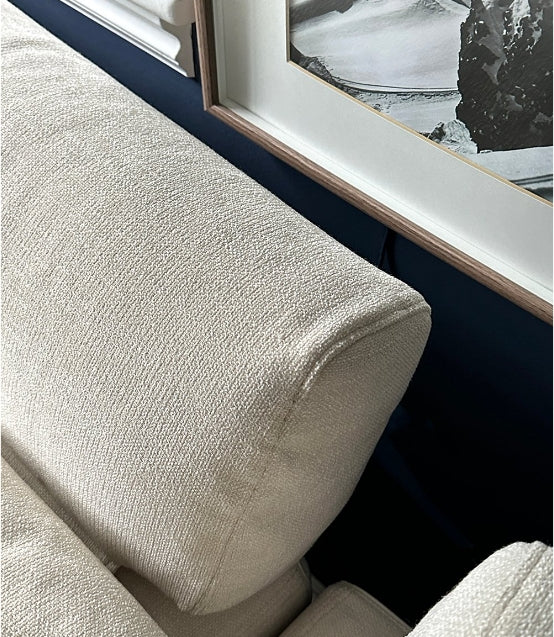Your recliner is a cherished piece of furniture that provides comfort and relaxation after a long day. However, like any well-used item, it requires regular maintenance to ensure its longevity and functionality. Neglecting to care for your recliner can lead to premature wear and tear, reducing its overall lifespan. By implementing a few essential maintenance tips, you can significantly extend the life of your recliner, allowing you to enjoy its comfort and support for years to come. In this article, we will discuss the key steps you can take to keep your recliner in top condition, from regular cleaning and lubrication to protecting it from damage and making necessary repairs.

1. Cleaning Your Recliner: A Key to Longevity
Keeping your recliner clean is one of the most important steps in maintaining its appearance and extending its life. Regular cleaning prevents the buildup of dirt, dust, and other debris that can wear down the fabric and cause damage over time.
Vacuuming
Start by vacuuming your recliner regularly using the upholstery attachment. This tool is designed to remove dirt and debris from the surface of the fabric without causing damage. Pay extra attention to the crevices and hard-to-reach areas where dirt tends to accumulate, such as along the seams and between the cushions.
Tackling Stains
Accidents happen, and when they do, it's essential to address stains promptly. For most stains, a mild detergent and water solution will do the trick. Apply the solution to a clean cloth and gently blot the stain, working from the outside in to prevent spreading. Remember to blot, not rub, as rubbing can damage the fabric fibers and make the stain worse.
Deep Cleaning
Every once in a while, your recliner may need a more thorough cleaning. You can either use a steam cleaner or hire a professional upholstery cleaning service. Steam cleaning uses hot water and a cleaning solution to penetrate deep into the fabric, removing dirt and stains that regular vacuuming and spot-cleaning can't reach. If you're unsure about tackling this task yourself, professional cleaners have the expertise and equipment to get your recliner looking like new again.
2. Lubricating Moving Parts: Keep Your Recliner Running Smoothly
Just like any machine with moving parts, your recliner needs lubrication to operate smoothly and avoid excessive wear and tear. Regularly lubricating the joints, hinges, and reclining mechanisms will help prevent squeaks, stiffness, and premature breakdowns.
Why Lubrication Matters
Over time, the moving parts in your recliner can become dry and stiff, making it harder to recline and putting extra stress on the components. By keeping these parts lubricated, you reduce friction and ensure that your recliner operates smoothly and efficiently.
Finding the Right Spots
To properly lubricate your recliner, you'll need to identify the moving parts. These typically include the joints where the chair's frame meets the seat and backrest, the hinges that allow the footrest to move, and the reclining mechanisms. Consult your recliner's manual or look for areas where metal parts move against each other.
Choosing the Right Lubricant
When it comes to lubricating your recliner, not just any lubricant will do. You'll want to use a product specifically designed for this purpose, such as WD-40 or silicone spray. These lubricants are designed to penetrate deep into the moving parts and provide long-lasting protection against friction and wear.
Applying the Lubricant
When applying the lubricant, a little goes a long way. Use a small amount and apply it directly to the moving parts, being careful not to overdo it. Excess lubricant can attract dirt and debris, which can actually cause more harm than good. After applying the lubricant, wipe away any excess with a clean cloth.
3. Tightening Loose Parts: Keeping Your Recliner Sturdy
Over time, the constant use of your recliner can cause screws, bolts, and nuts to loosen, leading to wobbling, squeaking, and even damage to the chair's frame. By regularly checking and tightening these parts, you can maintain your recliner's stability and prevent more serious issues down the road.
Inspection Time: Identifying Loose Parts
Make it a habit to periodically inspect your recliner for any loose parts. Common areas to check include the screws that hold the armrests in place, the bolts that connect the seat to the frame, and the nuts that secure the reclining mechanism. Gently wiggle these parts to see if there's any movement or looseness.
The Right Tools for the Job
When it comes to tightening loose parts, using the appropriate tools is key. Most recliners use standard screws, bolts, and nuts, so a simple set of screwdrivers and wrenches should suffice. If you're unsure about the specific tools needed, consult your recliner's manual or contact the manufacturer for guidance.
Tighten with Care
Once you've identified the loose parts and have the right tools in hand, it's time to get to work. Carefully tighten each screw, bolt, or nut until it's snug, but be cautious not to over-tighten. Applying too much force can strip the threads or cause the part to break, leading to more significant problems. If you encounter resistance or the part seems stuck, stop and assess the situation before proceeding.
Know When to Seek Help
If you're unsure about tightening a particular part or encounter a problem that seems beyond your skills, don't hesitate to call in a professional. Furniture repair experts have the knowledge and experience to diagnose and fix issues safely and effectively, ensuring that your recliner remains in top condition.
4. Protecting Your Recliner: Simple Steps for Long-Lasting Comfort
While regular cleaning, lubrication, and tightening can go a long way in maintaining your recliner, there are additional steps you can take to protect it from wear and tear. By implementing these simple protective measures, you can keep your recliner looking and feeling great for years to come.
Slipcovers and Throws
One of the easiest ways to protect your recliner's upholstery is by using a slipcover or throw. These protective coverings help shield the fabric from spills, stains, and general wear, while also adding a decorative touch to your furniture. Choose a slipcover or throw that's machine-washable for easy cleaning and maintenance.
Shielding from Sunlight
Direct sunlight can be harsh on your recliner's upholstery, causing fading and weakening the fabric fibers over time. To prevent this, position your recliner away from windows and direct sunlight whenever possible. If your recliner is in a sunny room, consider installing light-filtering curtains or shades to reduce the amount of direct sunlight it receives.
Keeping Your Distance
Just like sunlight, heat and moisture can also take a toll on your recliner. Avoid placing your recliner near heat sources like radiators, fireplaces, or heating vents, as the excessive heat can dry out and damage the upholstery. Similarly, keep your recliner away from areas with high humidity or moisture, such as bathrooms or basements, to prevent mold and mildew growth.
Rotate and Flip
To prevent uneven wear and extend the life of your recliner's cushions, make it a habit to rotate and flip them periodically. This simple practice helps distribute the weight and pressure evenly, preventing sagging and prolonging the cushions' shape and support. Aim to rotate and flip your cushions every few months, or more frequently if your recliner sees heavy use.
5. Repairing Damage: When to DIY and When to Call a Pro
Despite your best efforts to maintain and protect your recliner, accidents and wear can still happen. When you notice damage, it's essential to address it promptly to prevent it from worsening and to extend your recliner's life. Depending on the type and extent of the damage, you may be able to tackle the repair yourself or need to call in a professional.
Assessing the Damage
The first step in repairing your recliner is to assess the damage carefully. Is it a small tear in the fabric, a loose spring, or a broken frame? Understanding the nature and extent of the damage will help you determine whether it's a DIY job or if you need professional assistance.
Minor Repairs
For small holes or tears in the upholstery, you may be able to fix them yourself using a fabric repair kit or patch. These kits typically include adhesive patches or fabric glue that can help mend the damaged area. Be sure to follow the instructions carefully and choose a patch that closely matches your recliner's fabric color and texture for a seamless repair.
Major Repairs
Some recliner repairs, such as replacing broken springs or fixing a damaged frame, may be beyond the scope of a DIY fix. In these cases, it's best to call in a professional furniture repair service. They have the expertise, tools, and materials needed to handle more complex repairs and can ensure that your recliner is fixed safely and correctly.
The Importance of Prompt Repairs
Regardless of whether you tackle the repair yourself or hire a professional, it's crucial to address any damage promptly. Ignoring even small issues can lead to more extensive damage over time, ultimately shortening your recliner's lifespan and potentially costing you more in repairs down the line.
Extending Your Recliner's Life, One Step at a Time
Extending the life of your recliner is achievable through a combination of regular maintenance, proper care, and a proactive approach to repairs. By incorporating essential tasks like cleaning, lubricating, tightening loose parts, and protecting your recliner from potential hazards into your routine, you can significantly prolong its lifespan and ensure that it remains a comfortable and inviting piece of furniture for years to come. Adopting this maintenance mindset may require a little extra effort, but the long-term benefits of a well-cared-for recliner are undeniable.








